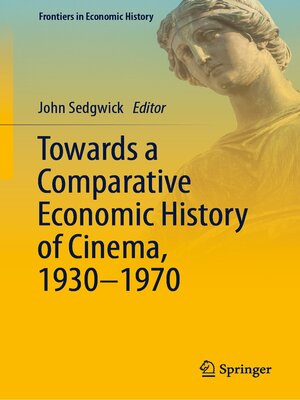Towards a Comparative Economic History of Cinema, 1930–1970
ebook ∣ Frontiers in Economic History
By John Sedgwick

Sign up to save your library
With an OverDrive account, you can save your favorite libraries for at-a-glance information about availability. Find out more about OverDrive accounts.
Find this title in Libby, the library reading app by OverDrive.



Search for a digital library with this title
Title found at these libraries:
| Library Name | Distance |
|---|---|
| Loading... |
This book examines the economic circumstances in which films were produced, distributed, exhibited, and consumed during the spoken era of film production until 1970. The periodisation covers the years between the onset of sound and the demise of the phased distribution of films. Films are generally appreciated for their aesthetic qualities. But they are also commodities. This work of economic history presents a new approach, considering consumption behaviour as significant as supply-side decision-making. Audiences' tastes are considered central, with box-office an indicator of what they liked. The POPSTAT Index of Film Popularity is used as a proxy where box office knowledge is missing. Comparative analysis is conducted through the tool RelPOP. The book comprises original case studies covering film consumption in Great Britain, the Netherlands, Sweden, and the United States during the 1930s;Australia and occupied Belgium during the Second World War; and Italy, the United States, Poland and Czechoslovakia during the Post-war. An overriding theme is how the classical American business model, which emerged during the 1910s linking production to distribution and exhibition, adapted to local circumstances, including the two countries behind the Iron Curtain during the years of 'High Stalinism'.







